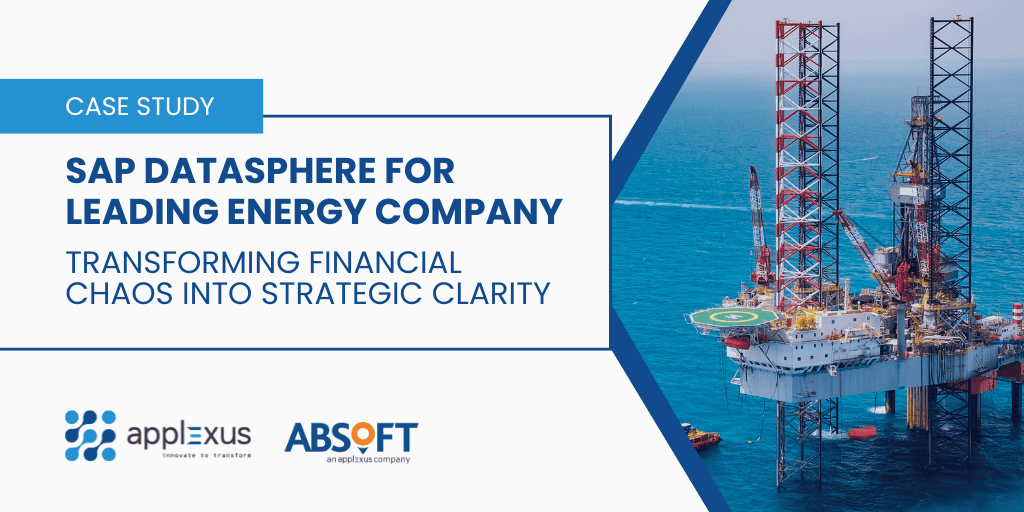Gone are the days when reporting was handled entirely within an organisation without the need for a broad data and analytics team. With vast amounts of data available, the continued use of legacy systems, and an ever-evolving business landscape, keeping up with market trends – like leveraging AI and ML tools – has become increasingly challenging.
Have a question or need help with your SAP system? Get in touch!Â
In the past, business strategy often relied on a significant degree of guesswork. Companies made decisions based on limited insights, without the benefit of predictive analytics to help them understand market trends, forecast revenues, or identify potential shortfalls. If any analysis was conducted, it typically came from a small IT team within the company and was then interpreted to make the best possible projections.
Today, data is more accessible than ever. At the touch of a button, top-level executives can see where their money is being spent and anticipate likely outcomes based on real-time insights. Does this guarantee perfect decision-making? Of course not! However, companies with a well-defined data and analytics strategy are staying ahead of the curve.
What drives this strategy is not just the data itself but also the tools used to analyse and visualise it effectively. Beyond traditional analytics, we now have the power of machine learning – and its integration with technologies like OpenAI – further enhancing how businesses leverage data for competitive advantage.
Join the Trend or Get Left Behind?
If you’re a large organisation and don’t yet have an AI and ML strategy, it’s time to act – fast! AI may still be in its early stages, but it is gaining momentum at an unprecedented rate. While we are still exploring its full potential and implications, one thing is clear: AI is not a passing trend.
With some of the world’s largest companies and governments investing billions into AI research and development, the direction is unmistakable. AI and ML are reshaping industries, redefining how decisions are made, and creating new opportunities for innovation. Organisations that embrace AI-driven analytics will gain a significant competitive edge, while those that lag risk becoming obsolete.
The question is no longer whether AI and ML will impact your business but rather how quickly you can adapt and integrate these technologies to stay ahead. The future of analytics is here; are you ready to harness its power?
AI Business Use Cases
AI and ML are already transforming industries in numerous ways. Retail businesses leverage intelligent tools for personalised recommendations and demand forecasting, enhancing customer experiences while optimising inventory. In finance, machine learning is being used to help prevent financial losses and spend analysis. Meanwhile, supply chains use AI-driven analytics to optimise inventory management, predict disruptions, and streamline logistics. These real-world applications showcase the transformative power of AI and ML in analytics.
Read the case study to discover how intelligent data tools are being leverage by companies:
Where’s the Catch?
While AI and ML present significant opportunities, organisations must also navigate key challenges. Data quality remains a critical issue; if the data is not clean, then neither will the output be. AI is only as good as the data it’s trained on. Many companies also face skill gaps, lacking the necessary expertise to implement AI effectively. Additionally, integrating AI with legacy systems can be a complex process, requiring significant investment and change management efforts. Overcoming these challenges is crucial for successful AI adoption.
The Future of AI in Analytics
AI is evolving rapidly, and its role in analytics is only set to expand. Automated ML makes it easier for businesses to build and deploy models without requiring deep technical expertise. Real-time AI analytics enables instant decision-making using live data streams and unlocking new insights from connected systems. AI and ML will become even more integral to business success as these advancements continue.
Now is the time to embrace AI-powered analytics. Organisations should start investing in AI tools, reevaluate their current data strategies, and explore platforms that can drive meaningful insights. Whether adopting ML for predictive analysis or leveraging AI to automate decision-making, businesses that act now will position themselves for long-term success. The future of analytics is intelligent—don’t get left behind.
To learn more about how the Absoft team can make your system safer and more secure, please reach out now!










